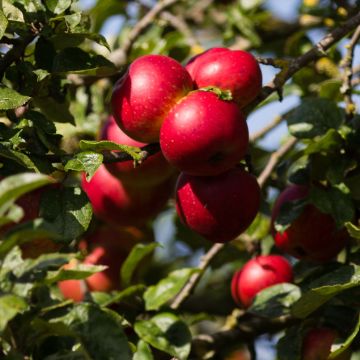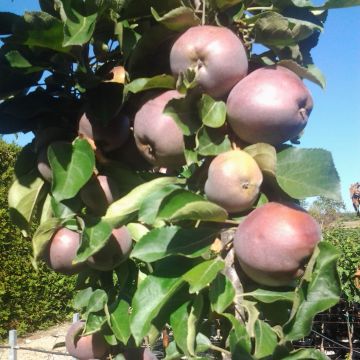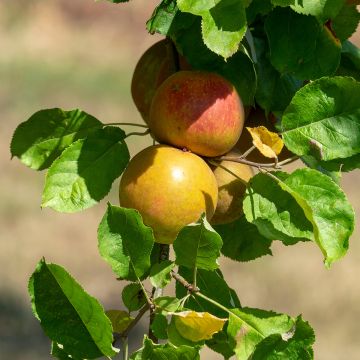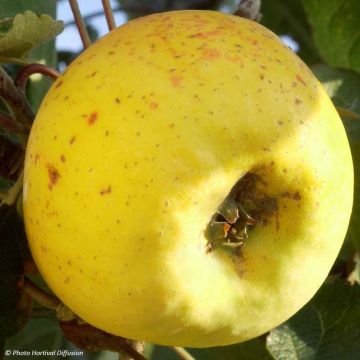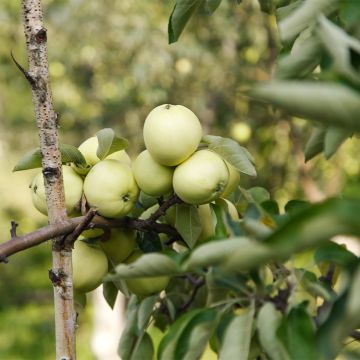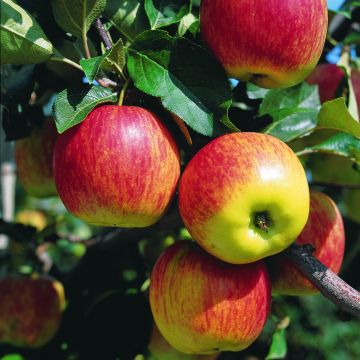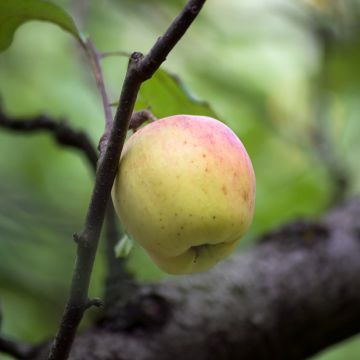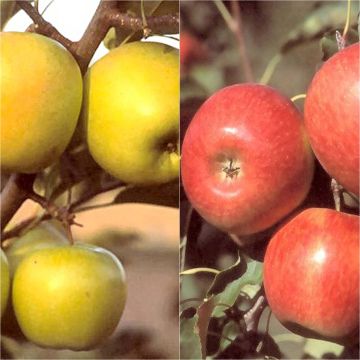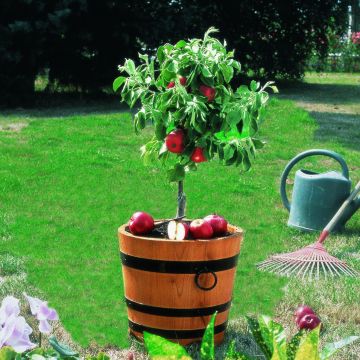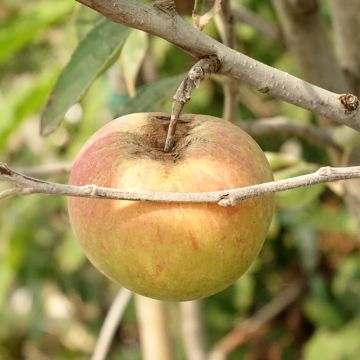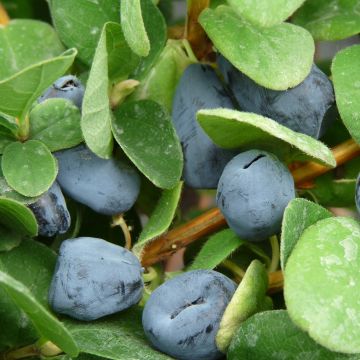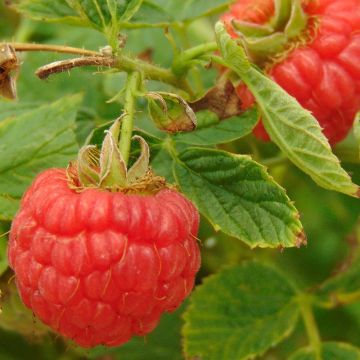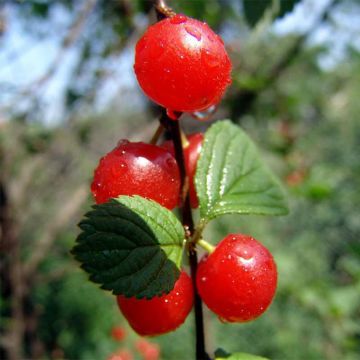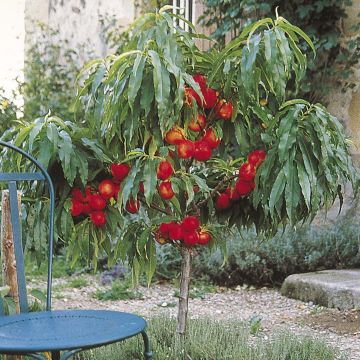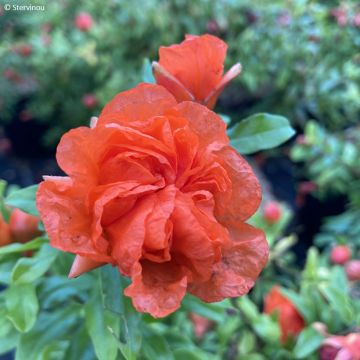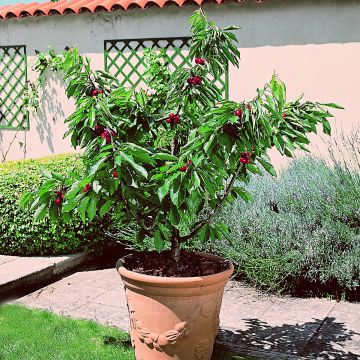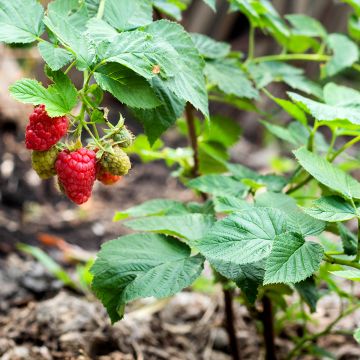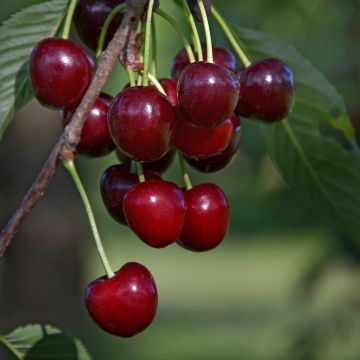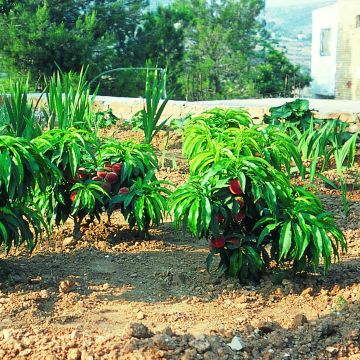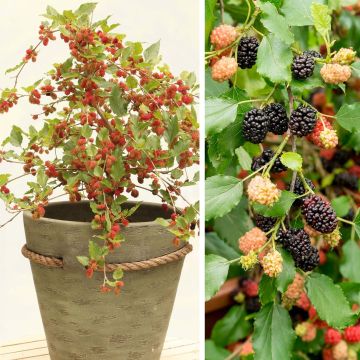Shipping country and language
Your country of residence may be:
Your country of residence is:
For a better user experience on our website, you can select:
Your shipping country:
Andorra
Austria
Belgium
Bulgaria
Canada
Chile
Croatia
Cyprus
Czechia
Denmark
Estonia
Finland
France
Germany
Greece
Hungary
Iceland
Ireland
Italy
Latvia
Lithuania
Luxembourg
Malta
Monaco
Netherlands
Poland
Portugal
Romania
Slovakia
Slovenia
Spain
Sweden
Switzerland
United Kingdom
We only deliver seed and bulb products to your country. If you add other products to your basket, they cannot be shipped.
Language:
French
German
Spanish
English
My Account
Hello
My wish lists
Plantfit
Log in / Register
Existing customer?
New customer?
Create an account to track your orders, access our customer service and, if you wish, make the most of our upcoming offers.
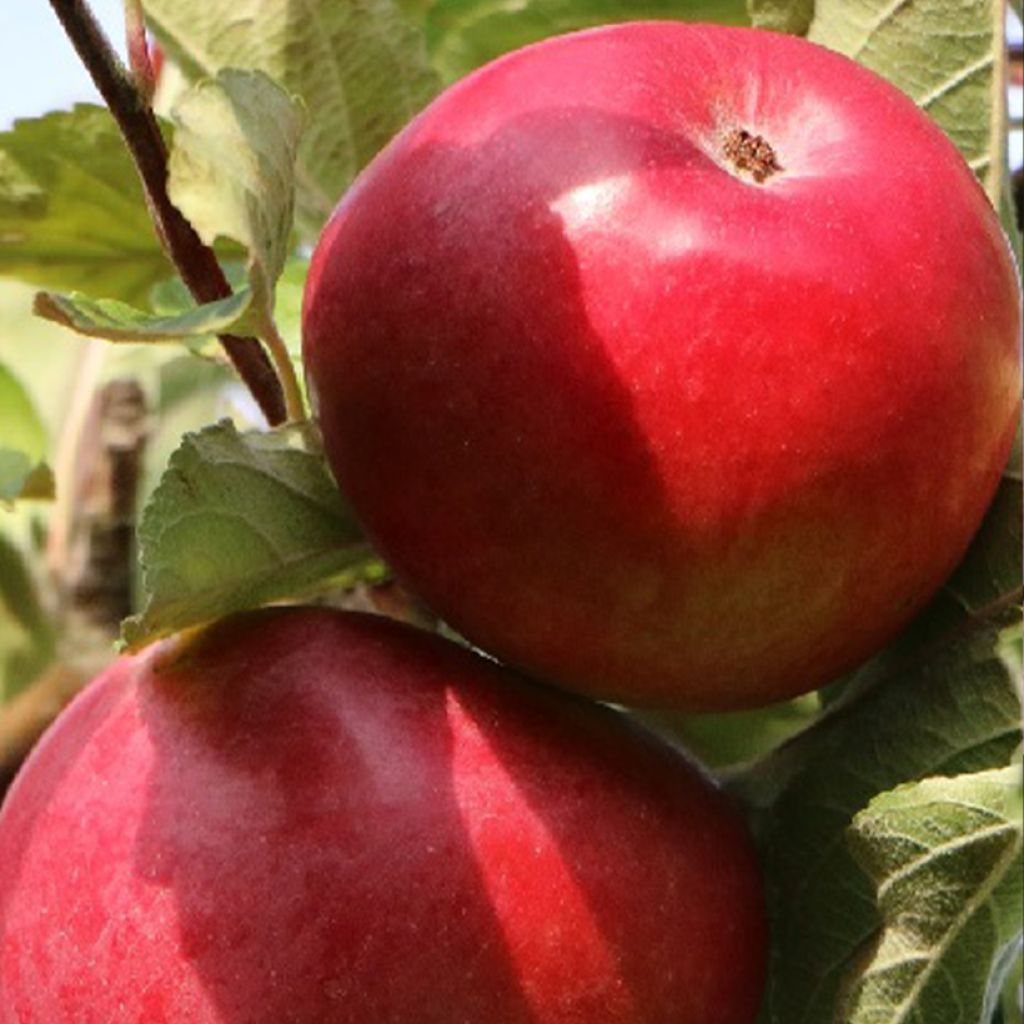

Malus domestica Red Dwarf
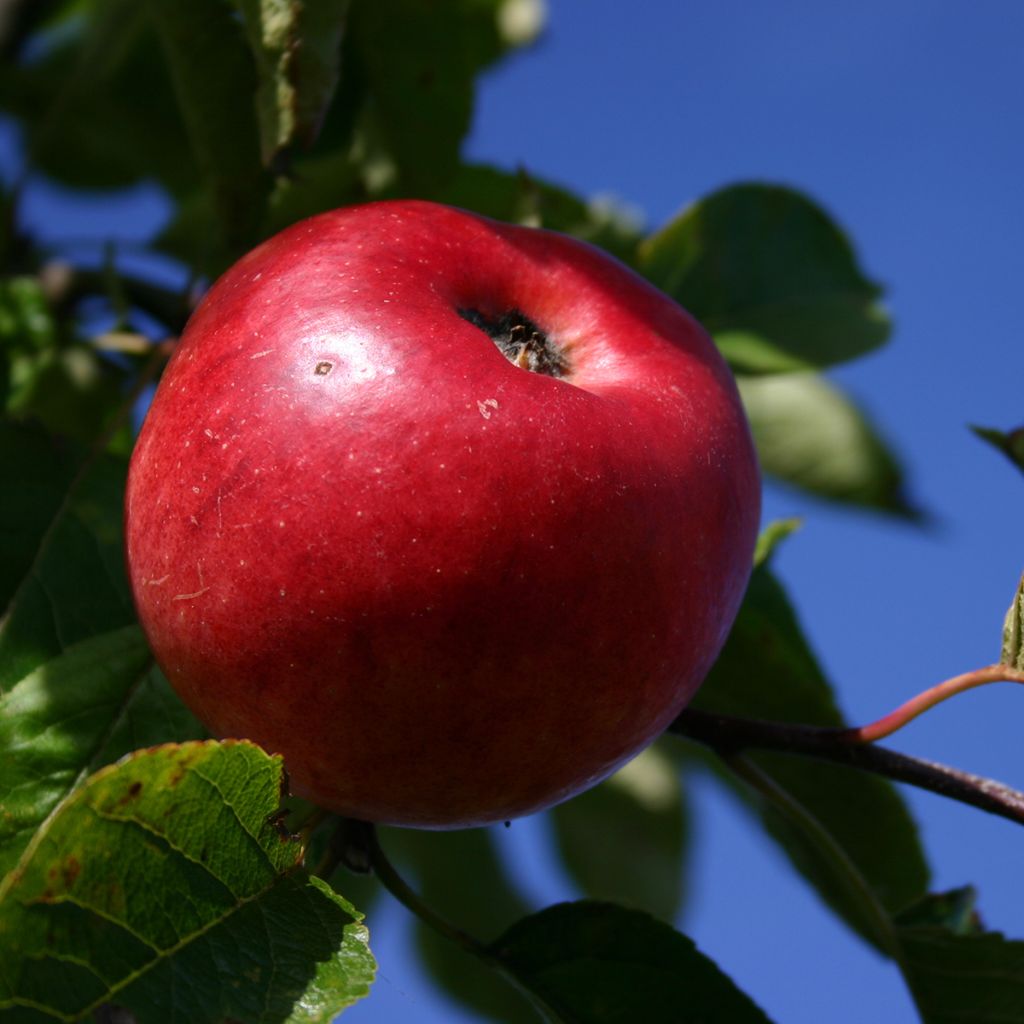

Malus domestica Red Dwarf
Malus domestica Red Dwarf
Malus domestica Red Dwarf
Apple, Orchard Apple
Order in the next for dispatch today!
Dispatch by letter from €3.90.
Delivery charge from €5.90 Oversize package delivery charge from €6.90.
More information
This item is not available in your country.
Schedule delivery date,
and select date in basket
This plant carries a 6 months recovery warranty
More information
We guarantee the quality of our plants for a full growing cycle, and will replace at our expense any plant that fails to recover under normal climatic and planting conditions.
From €5.90 for pickup delivery and €6.90 for home delivery
Express home delivery from €8.90.
Description
The 'Red Dwarf' Dwarf Apple Tree immediately announces its color. It is a dwarf variety that generally does not exceed 1.50m (5ft) in height and produces bright red fruits. Its compact and spreading habit gives it a balanced silhouette and allows it to be planted in any garden, no matter how small, and even on a terrace. Self-fertile, its decorative spring flowering turns into fruits ready to be harvested from September. They can be consumed fresh, cooked or as juice. A hardy variety, to be planted in sunny exposure, or possibly in partial shade in hot climates, and to be watered regularly during the summer.
The Domestic Apple Tree (Malus domestica) belongs to the very important Rosaceae family, which hosts many of our temperate climate fruit trees (Pear, Peach, Plum, Strawberry...), many ornamental species (Rose of course, but also Amelanchier or Pyracantha) and wild plants from our countryside. The Apple Tree itself is a plant of high economic importance, with nearly 20,000 varieties cultivated in many countries in both hemispheres of our planet.
'Red Dwarf' belongs to the small group of dwarf varieties, which can be grown both in the ground and in a pot or container on a terrace or balcony. With a relatively slow growth, this spreading dwarf apple tree reaches a maximum height of 1.50m (5ft) and sometimes even less, limiting itself to around 1m (3ft)! Its homogeneous and dense vegetation is composed of medium green leaves, ovate to ovoid in shape, with finely toothed leaf margins. Their slightly shiny surface gives them a certain aesthetic, especially in the rain. In spring, it produces pretty single flowers, light pink in colour, which give it a certain romantic charm. Melliferous, they provide bees with nectar. As a self-fertile variety, the flowers are pollinated with each other without needing another apple tree nearby. However, cross-pollination is often beneficial, ensuring a very good fruit set... The fertilized flowers develop into beautiful red fruits, which ripen from September and can be harvested until October depending on the climatic zones. Visually attractive with their uniform red skin, the apples are sweet and slightly acidic, aromatic and crunchy. Delicious eaten raw, they can also be used in cooking to make pies or other desserts, or even fruit juice.
While its size is limited, the hardiness of this Apple Tree is much less so, as it is capable of withstanding temperatures as low as -23°C (-9.4°F). However, it should be kept in mind that a potted plant is more exposed than one in the ground, as the roots do not benefit from the thermal inertia of the surrounding soil. In a pot, the cold attacks from all sides and therefore becomes more dangerous. In regions with harsh winters, it is therefore preferable to move the pot to a sheltered corner, for example. Sunny exposure suits it perfectly, possibly partially shaded in hot summers.
The 'Red Dwarf' Apple Tree is interesting for small gardens, but especially for living spaces such as balconies, terraces and patios. With this type of dwarf fruit trees, there is no need to have a large plot of land to enjoy delicious fruits. It is possible to create a mini orchard to enjoy your own pears, peaches or cherries. Thus, the Dwarf Peach Tree Fruit Me Peach Me Red, which is also self-fertile and quick to bear fruit, will give you delicious yellow-fleshed peaches in summer, and will also reward you with a beautiful pink flowering in spring. The Dwarf Cherry Tree 'Cherry Baby' produces white flowers in March-April, which then develop into beautiful, sweet and tangy bright red cherries. In addition to these fruit trees, also consider adopting some aromatic plants that will accompany your dishes in the kitchen...
Plant habit
Fruit
Flowering
Foliage
Botanical data
Malus
domestica
Red Dwarf
Rosaceae
Apple, Orchard Apple
Cultivar or hybrid
Other Apple trees
Planting and care
Choose a well-sunlit location for your 'Red Dwarf' dwarf apple tree. The soil can be slightly chalky or acidic, but not excessively so. Dig a large planting hole at least 3 times the size of the root ball. Simultaneously add organic matter (potting soil, compost...) and a basal fertilizer such as crushed horn. Do not bury the graft collar and stake if necessary. Soak the root ball in a bucket of water for fifteen minutes before planting. Then water generously, even in winter and even if it rains. Fruit trees are ideally planted between October and March, outside the frost period. Container-grown plants can be planted all year round, except during periods of high heat or frost.
The advantage of dwarf fruit trees is that they can be planted in containers or pots for outdoor use. Choose a container of at least 60 L. Make sure the container has drainage holes and provide good drainage by filling the bottom with a thick layer of clay pellets or gravel. In pots, your trees will naturally require more regular watering. In winter, move your fruit trees to a sheltered location and stop watering during frost periods. Every two years, at least, remove the top layer of soil and replace it with fresh potting soil. Fertilize before flowering, using a special fertilizer that is not too rich in nitrogen, but rather high in potassium to promote fruiting.
In winter, at the base of the tree and lightly incorporated into the soil surface, you can add a small handful of wood ash, which is rich in potash, to improve fruiting. Apple trees can be subject to various diseases and pests. To limit risks, space the trees sufficiently apart, plant multi-species hedges, birdhouses or insect hotels to attract beneficial insects. In summary, prioritize diversity.
The main diseases of apple trees are scab (brown spots on leaves), brown rot (wilting of flowers and rotting of fruit on the tree), and powdery mildew (white powdery coating on leaves). For these three cases, preventive action is preferred by spraying a decoction of horsetail. As a last resort and in case of severe infestation, you can apply a treatment based on Bordeaux mixture. As for pests, the codling moth (or fruit worm) is a small caterpillar that burrows inside the fruit after being laid by a moth. To remedy this, it is preferable to act preventively by promoting the presence of great tits and bats through the installation of nest boxes. In case of aphid infestation, spray a solution based on black soap.
During the harvest in September, only keep the picked fruits. For proper storage, it is advisable to place the apple with its stem downwards, on racks or in crates. Choose a preferably completely dark, dry and cool place, but frost-free.
Planting period
Intended location
Care
This item has not been reviewed yet - be the first to leave a review about it.
Fruit trees for small gardens
Haven't found what you were looking for?
Hardiness is the lowest winter temperature a plant can endure without suffering serious damage or even dying. However, hardiness is affected by location (a sheltered area, such as a patio), protection (winter cover) and soil type (hardiness is improved by well-drained soil).

Photo Sharing Terms & Conditions
In order to encourage gardeners to interact and share their experiences, Promesse de fleurs offers various media enabling content to be uploaded onto its Site - in particular via the ‘Photo sharing’ module.
The User agrees to refrain from:
- Posting any content that is illegal, prejudicial, insulting, racist, inciteful to hatred, revisionist, contrary to public decency, that infringes on privacy or on the privacy rights of third parties, in particular the publicity rights of persons and goods, intellectual property rights, or the right to privacy.
- Submitting content on behalf of a third party;
- Impersonate the identity of a third party and/or publish any personal information about a third party;
In general, the User undertakes to refrain from any unethical behaviour.
All Content (in particular text, comments, files, images, photos, videos, creative works, etc.), which may be subject to property or intellectual property rights, image or other private rights, shall remain the property of the User, subject to the limited rights granted by the terms of the licence granted by Promesse de fleurs as stated below. Users are at liberty to publish or not to publish such Content on the Site, notably via the ‘Photo Sharing’ facility, and accept that this Content shall be made public and freely accessible, notably on the Internet.
Users further acknowledge, undertake to have ,and guarantee that they hold all necessary rights and permissions to publish such material on the Site, in particular with regard to the legislation in force pertaining to any privacy, property, intellectual property, image, or contractual rights, or rights of any other nature. By publishing such Content on the Site, Users acknowledge accepting full liability as publishers of the Content within the meaning of the law, and grant Promesse de fleurs, free of charge, an inclusive, worldwide licence for the said Content for the entire duration of its publication, including all reproduction, representation, up/downloading, displaying, performing, transmission, and storage rights.
Users also grant permission for their name to be linked to the Content and accept that this link may not always be made available.
By engaging in posting material, Users consent to their Content becoming automatically accessible on the Internet, in particular on other sites and/or blogs and/or web pages of the Promesse de fleurs site, including in particular social pages and the Promesse de fleurs catalogue.
Users may secure the removal of entrusted content free of charge by issuing a simple request via our contact form.
The flowering period indicated on our website applies to countries and regions located in USDA zone 8 (France, the United Kingdom, Ireland, the Netherlands, etc.)
It will vary according to where you live:
- In zones 9 to 10 (Italy, Spain, Greece, etc.), flowering will occur about 2 to 4 weeks earlier.
- In zones 6 to 7 (Germany, Poland, Slovenia, and lower mountainous regions), flowering will be delayed by 2 to 3 weeks.
- In zone 5 (Central Europe, Scandinavia), blooming will be delayed by 3 to 5 weeks.
In temperate climates, pruning of spring-flowering shrubs (forsythia, spireas, etc.) should be done just after flowering.
Pruning of summer-flowering shrubs (Indian Lilac, Perovskia, etc.) can be done in winter or spring.
In cold regions as well as with frost-sensitive plants, avoid pruning too early when severe frosts may still occur.
The planting period indicated on our website applies to countries and regions located in USDA zone 8 (France, United Kingdom, Ireland, Netherlands).
It will vary according to where you live:
- In Mediterranean zones (Marseille, Madrid, Milan, etc.), autumn and winter are the best planting periods.
- In continental zones (Strasbourg, Munich, Vienna, etc.), delay planting by 2 to 3 weeks in spring and bring it forward by 2 to 4 weeks in autumn.
- In mountainous regions (the Alps, Pyrenees, Carpathians, etc.), it is best to plant in late spring (May-June) or late summer (August-September).
The harvesting period indicated on our website applies to countries and regions in USDA zone 8 (France, England, Ireland, the Netherlands).
In colder areas (Scandinavia, Poland, Austria...) fruit and vegetable harvests are likely to be delayed by 3-4 weeks.
In warmer areas (Italy, Spain, Greece, etc.), harvesting will probably take place earlier, depending on weather conditions.
The sowing periods indicated on our website apply to countries and regions within USDA Zone 8 (France, UK, Ireland, Netherlands).
In colder areas (Scandinavia, Poland, Austria...), delay any outdoor sowing by 3-4 weeks, or sow under glass.
In warmer climes (Italy, Spain, Greece, etc.), bring outdoor sowing forward by a few weeks.
